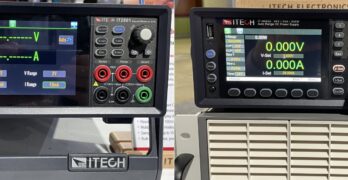Test equipment is everywhere. Every trade show has it regardless of the focus. Power is no exception. At APEC 2024, EE World visited several booths displaying test equipment: meters, oscilloscopes, source-measure units (SMUs), bench power supplies, … [Read More...] about APEC 2024: Test equipment
Main Content
FROM THE EDITORS
-

Aimee Kalnoskas
It’s LEAP-in time again: 2024 LEAP Awards now open for nominations -

Martin Rowe
RF generators produce test signals to 40 GHz -

Emma Lutjen
Underfill epoxy offers high glass transition temperature -

Bill Schweber
Zonal automotive power distribution can dramatically improve efficiency, weight, and cost: part 3 -

Jeff Shepard
What are the applications for hollow core fiber optical sensors? -

Rick Nelson
What is intermodulation, and is it good or bad? Part 2 -

Kenneth Wyatt
How to separate differential and common-mode harmonic noise currents -

Rakesh Kumar, PhD
What does a digital twin mean for a BMS? -

Aharon Etengoff
Why use a switching regulator instead of a linear regulator for DC-to-DC conversion?
Today on EE World
- What are the applications for hollow core fiber optical sensors?
- It’s LEAP-in time again: 2024 LEAP Awards now open for nominations
- RF generators produce test signals to 40 GHz
- How do 5G eMBB and FWA data services compare?
- Integrate a camera into NVIDIA Jetson Orin NX/nano designs
- Versatile, ac-dc power supply for medical and industrial use
- Battery and charging innovations driving electrification
FAQs
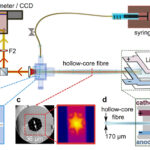
What are the applications for hollow core fiber optical sensors?
Hollow core fiber (HCF) optical sensors are used in applications including Li-ion battery research and development (R&D), robotic arms, civil engineering infrastructural health monitoring, … Read about What are the applications for hollow core fiber optical sensors?

How do 5G eMBB and FWA data services compare?
Fixed-wireless access is a special use case of enhanced mobile broadband, one of the three use cases specified for 5G. FWA brings different challenges for deployment than eMBB. by Sridhar … Read about How do 5G eMBB and FWA data services compare?

Battery and charging innovations driving electrification
The urgency of mitigating climate change and reducing greenhouse gas emissions has prompted businesses to adopt more sustainable transportation solutions, particularly electric vehicles … Read about Battery and charging innovations driving electrification

Choose a 5G base station’s PA bias control circuit
Bias control of PAs is crucial to ensure optimum radio performance under all conditions. Current sensing and temperature sensing provides the feedback needed to control the PA bias. The choice … Read about Choose a 5G base station’s PA bias control circuit
Focus on Analog ICs

Compact analog front-end provides efficient electrochemical sensing for next-gen devices
onsemi announced the availability of the CEM102, a compact analog front-end (AFE) that enables electrochemical sensing with exceptional accuracy at very low currents. With its small form factor and … [Read More...] about Compact analog front-end provides efficient electrochemical sensing for next-gen devices

SIM card level translator boasts ESD protection
HMI announced the launch of its HL5301WL01, a SIM card level translator with level shifting and IEC610004-2 electrostatic charge protection for SIM card ports. The HL5301WL01 integrates two … [Read More...] about SIM card level translator boasts ESD protection
Focus on Microcontrollers
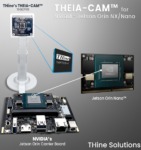
Integrate a camera into NVIDIA Jetson Orin NX/nano designs
THine Solutions, Inc. announced the new THEIA-CAM 13MP PDAF Camera, THSCJ101, for NVIDIA Jetson Orin NX and Jetson Orin Nano platforms. Along with its pre-optimized ISP firmware and Linux driver, … [Read More...] about Integrate a camera into NVIDIA Jetson Orin NX/nano designs
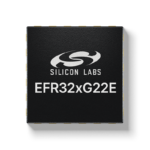
SoCs designed to enable battery-free IoT devices
Silicon Labs has announced a new family of wireless system-on-chip (SoC) products called the xG22E. This new SoC family is designed to operate within the ultra-low power requirements of battery-free, … [Read More...] about SoCs designed to enable battery-free IoT devices
Focus on Power Electronics

Versatile, ac-dc power supply for medical and industrial use
TDK Corporation announces the introduction of the TDK-Lambda brand CUS800M and CUS1000M AC-DC power supply series in a 6.73 x 3.35 x 1.67” (171 x 85 x 42.5mm) case size. Rated at up to 800W and 1000W, these very compact products also feature a … [Read More...] about Versatile, ac-dc power supply for medical and industrial use
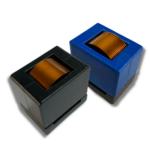
Flat wire and square core PFC chokes target industrial and automotive applications
ITG Electronics has introduced a line of power factor correction (PFC) chokes whose slim design enables engineers to incorporate them into tight spaces. The company’s PFC282820B and PFC282822B series of PFC chokes are suitable for 500-1000 watt … [Read More...] about Flat wire and square core PFC chokes target industrial and automotive applications
Focus on 5G

How do 5G eMBB and FWA data services compare?
Fixed-wireless access is a special use case of enhanced mobile broadband, one of the three use cases specified for 5G. FWA brings different challenges for deployment than eMBB. by Sridhar Bhaskaran, Rakuten Symphony Mobile network operators … [Read More...] about How do 5G eMBB and FWA data services compare?

5G software stack runs on small cell PHY SoC
Integrate a 5G Open RAN L1-L3 software stack into a small-cell design. Software Radio Systems (SRS) has announced the successful integration, test, and validation of its srsRAN Enterprise 5G distributed unit (DU) and Centralized unit (CU) stack … [Read More...] about 5G software stack runs on small cell PHY SoC
Focus on Test & Measurement
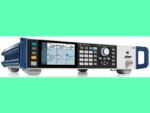
RF generators produce test signals to 40 GHz
The SMB100B series from Rohde & Schwarz produces microwave carriers to 40 GHz. Test-instrument manufacturer Rohde & Schwarz introduced a series of four microwave signal generators, the SMB100B. The instruments come with four models depending on top frequency: 12.75 GHz, 20 GHz, 31.8 GHz, and 40 GHz. All models support AM, FM, phase, and pulse […]

What is intermodulation, and is it good or bad? Part 2
A mixer can upconvert and downconvert a modulated signal with no loss of baseband information. Part 1 of this series described intermodulation resulting from the combining of two or more sinusoidal signals through a nonlinear device such as the mixer in Figure 1. The mixer’s output is the product of its two inputs, and its […]
Embedded Systems
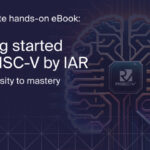
Advanced development tools tailored for general-purpose, 32-bit RISC-V MCUs
IAR announced enhancements to its premier development environment to support the first general-purpose 32-bit RISC-V MCUs with Renesas’ internally developed CPU core. This enhanced offering includes advanced debugging capabilities and sophisticated … [Read More...] about Advanced development tools tailored for general-purpose, 32-bit RISC-V MCUs
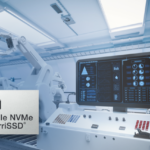
Compact SSDs support PCIe Gen 4×4 with enhanced data integrality and i-temp compatibility
Silicon Motion Technology Corporation introduced the new generation FerriSSD NVMe PCIe Gen 4 x4 BGA SSD. This latest solution features support for i-temp and integrates advanced IntelligentSeries technology, delivering robust data integrity in … [Read More...] about Compact SSDs support PCIe Gen 4×4 with enhanced data integrality and i-temp compatibility
Podcasts

Tescan’s UniTOM HR is focus of Episode 9 of R&D 100 – The Podcast
R&D World editors Paul Heney and Aimee Kalnoskas are back, and this time they’re talking about a lot of news, in addition to the technology of the day. First, they delve into some important updates about the R&D 100 Awards for 2023 — and then dip their toes into the strange new world of AI […]






